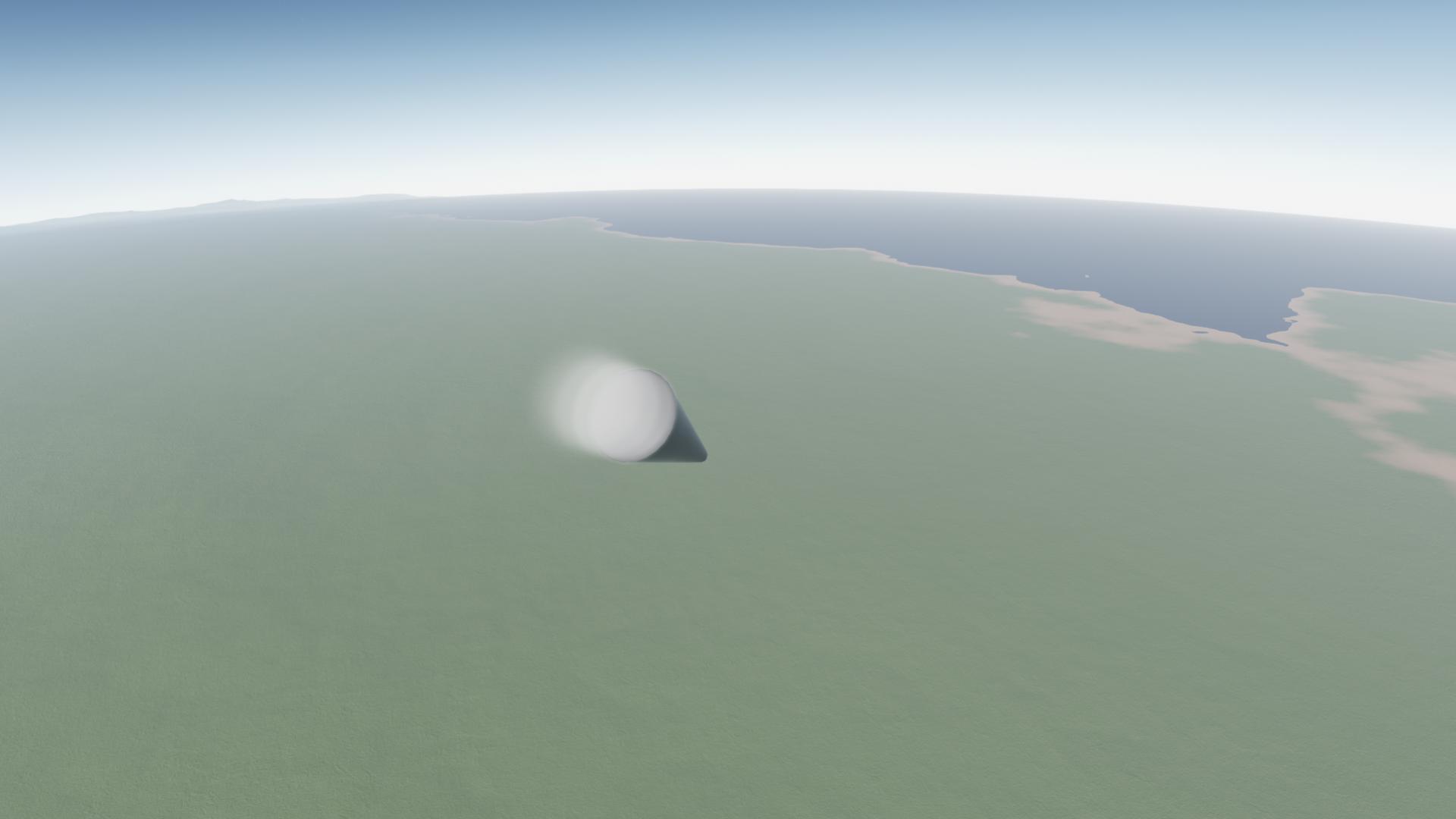Enjoy this highly detailed replica of the Trident II ICBM.
Don't forget to upvote if you liked it.
Watch this showcase of the missile:

Controls
Before you start, set your desired heading and turn off RCS (Activation group 10)
Stage 1: Ignition of Stage 1 Motor
Ascend at 80° elevation until the fuel depletes
Stage 2: Seperation of Stage 1 Motor
Stage 3: Ignition of Stage 2 Motor
Continue to ascend at 60° elevation until the fuel depletes
Stage 4: Seperation of Stage 2 Motor
Stage 5: Ignition of Stage 3 Motor
Proceed to build up horizontal velocity at an elevation below 45° until you reach your desired trajectory
Stage 6: Nose Fairing
Once you have escaped the dense part of the atmosphere at approximately 30,000 m you may blow of the nose fairing
Once you reach the apoapsis of the trajectory, turn on RCS and lock the release assembly to prograde
Stage 7-12: Seperation of the 6 x MIRV W88 Warheads
Seperate your warheads at your desired interval, I recommend one warhead per second
Note: Your camera will be fixed on the last warhead
Description
The UGM-133A Trident II, or Trident D5 is a submarine-launched ballistic missile (SLBM), built by Lockheed Martin Space Systems in Sunnyvale, California, and deployed with the American and British navies. It was first deployed in March 1990, and remains in service.
The Trident II Strategic Weapons System is an improved SLBM with greater accuracy, payload, and range than the earlier Trident C-4. It is a key element of the U.S. strategic nuclear triad and strengthens U.S. strategic deterrence. The Trident II is considered to be a durable sea-based system capable of engaging many targets.
It enhances the U.S. position in strategic arms negotiation with performance and payload flexibility that can accommodate active treaty initiatives (see New START). The Trident II's increased payload allows nuclear deterrence to be accomplished with fewer submarines, and its high accuracy – approaching that of land-based missiles – enables it to be used as a first strike weapon.
Trident II missiles are carried by 14 US Ohio and four British Vanguard-class submarines, with 24 missiles on each Ohio class and 16 missiles on each Vanguard class (however, the number of missiles on Ohio-class submarines will be reduced to 20 each in coming years, in compliance with the New Strategic Arms Limitation Treaty).
There have been over 161 successful test flights of the D5 missile since design completion in 1989, the most recent being from USS Nebraska in March 2018. There have been fewer than 10 test flights that were failures, the most recent being from HMS Vengeance off the coast of Florida in June 2016. The D5 is the sixth in a series of missile generations deployed since the sea-based deterrent program began 60 years ago. The Trident D5LE (life-extension) version will remain in service until 2042.
GENERAL INFO
- Created On: Windows
- Game Version: 0.6.5.0
- Price: $1,988k
- Number of Parts: 116
- Dimensions: 7 m x 1 m x 1 m
PERFORMANCE
- Total Delta V: 5.9km/s
- Total Thrust: 200kN
- Engines: 3
- Wet Mass: 4,830kg
- Dry Mass: 103kg
STAGES
| Stage | Engines | Delta V | Thrust | Burn | Mass |
|---|---|---|---|---|---|
| 1 | 1 | 795m/s | 125kN | 26s | 4,830kg |
| 3 | 1 | 618m/s | 50kN | 27s | 2,472kg |
| 5 | 1 | 4.5km/s | 25kN | 2.4m | 1,630kg |
2 Comments
- Log in to leave a comment
-
547 TopSecret24.6 years ago
This was an extremely impressive Ballistic missile for the age it is on the website. At first I didn’t understand why the RCS was counteracting the rocket’s Gimballing but after the second try I realized it was to hold the warhead delivery vehicle in place while separation happened. It still spiraled out of control, but the first 2-3 warheads separated flawlessly. For a 750km range and exceptional control, I’ll call this the best missile on the website.










My name is Gloria Pashby and I'm assisting a TV show. We wanted to contact you to ask for permission to show footage from your YouTube video (https://www.youtube.com/watch?v=qsraIaW_lSU&t=11s). Is there a way I could email you details on our request & TV show? My email is: gpmedia105@gmail.com
Thank you so much and I look forward to hear from you soon! Gloria